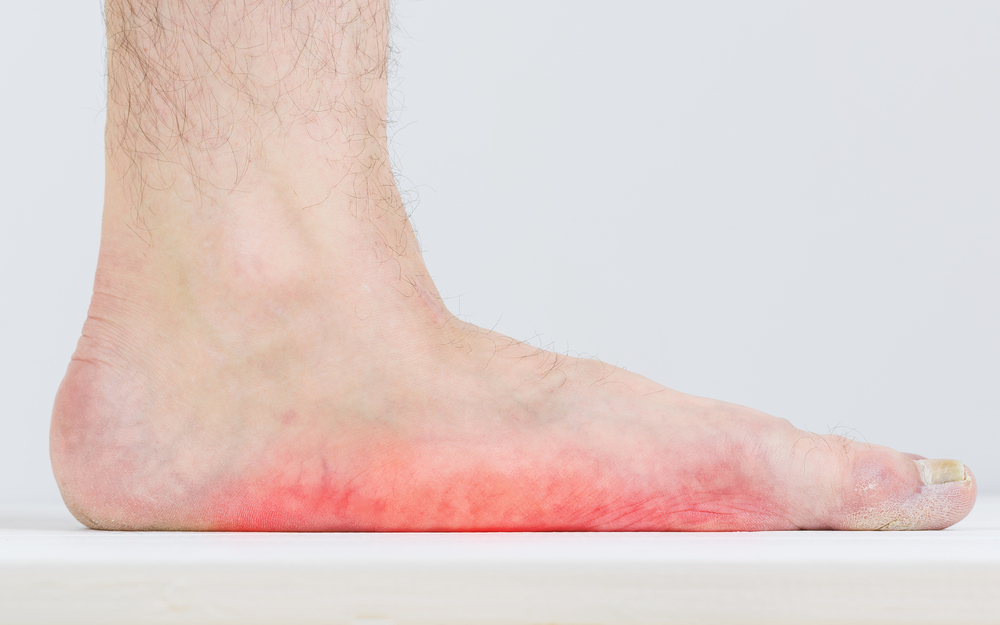Flat feet are a very common foot condition, estimated to affect approximately 25% of the population in places like Victoria, BC. Also referred to as pes planus or collapsed arches, this condition causes the arches of the feet to collapse, with the sole of the foot appearing almost entirely flat. Some people don’t suffer any noticeable symptoms, but others can struggle with pain and discomfort. Fortunately, there are a few things you can do to correct the condition.
8 Things You Can Do to Help Correct Flat Feet in Victoria
1. Visit a Podiatric Care Center
Some people mistakenly believe that this condition cannot be treated or that its symptoms cannot be alleviated. But in actual fact, there are plenty of things that podiatric care professionals can do to ease your symptoms associated with pes planus and help you enjoy a more comfortable life. So, one of the best things to do is contact a professional podiatric care or orthotics clinic near you and book an appointment.
At a local care center, you’ll be able to talk to the doctors about your condition and possibly undergo tests, such as X-rays and CT scans, so that they can find out more about your feet. From there, your podiatric care specialist will be able to offer physical therapy or suggest possible treatments or lifestyle alterations you can make to reduce pain or discomfort in the feet, ankles, legs, or knees.
2. Tennis Ball Rolls
There are various simple exercises and movements you can do in the comfort of your own home or workplace to correct fallen arches and make your feet stronger. Tennis ball rolls are a really easy and enjoyable example of this, and the best part is that you can do them almost anywhere. You can do them at home while watching TV, for example, or at work while sitting at your desk.
To start, you’ll need a tennis ball, or a golf ball, or some other kind of small ball. Place the ball under one of your feet while sitting down in a chair. Keep your back straight as you roll the ball around under your foot for a few minutes, before switching to the other foot and repeating the process. This is something you can do every day, and it can provide a lot of comfort and relief for those who experience pes planus pain.
3. Towel Curls
Here’s another simple foot exercise that you can do while sitting down at any time of day, and all you need to get started is a towel and somewhere to sit. Just like tennis ball rolls, this is something you can do at home at the end of a long day or while working, if you prefer.
To begin, take a seat and place the towel on the floor beneath your feet. Keeping your back straight, dig your heels into the floor and use your toes to gather up the towel. Press the toes back into the center of your foot and pull the towel towards you before releasing. Repeat the exercise 10 to 15 times per set, for two or three sets.
4. Toe Lifts
Another really good exercise you can do for pes planus is called toe lifts or toe taps. Again, it’s a simple exercise, and you only have to spend a few minutes doing it each day to start seeing improvements in your feet over time. You don’t need any special equipment for this exercise, but you will need to remove shoes and socks to provide maximum freedom of movement for your toes.
You can begin this exercise while seated or while standing. You can even give it a try while holding different yoga poses, if you’re able. Begin with your foot flat on the floor, and then try to lift your big toe, while keeping the others pressed to the floor. After that, alternate and try lifting the four smaller toes while pressing the big one down. Repeat this a dozen times, or until your arch muscles start to feel tired.
5. Lifts and Stretches
There are various other exercises and stretches you can perform on a daily or weekly basis to start strengthening your feet, building up your arch muscles, and reducing the risk of suffering symptoms associated with pes planus. For example, you can try standing in place with your feet hip-width apart and then putting your weight to the outer sides of your feet as you lift your arches up. This is called an arch lift or arch raise.
You can also try calf raises; for this exercise, simply stand in place and then lift your heels up, so you’re balancing on the front of your feet for a few seconds, before lowering back down. Exercises like arch lifts and calf raises can be really effective at correcting collapsed arches, and you can experiment with different movements and stretches to see which ones suit you best.
6. Change the Way You Walk
Walking is something that we do every single day, and the steps we take can have a direct impact on the health, shape, and strength of our feet. Often, experts encourage people with pes planus to think more carefully about the way they walk and the positions of their feet to help alleviate some of their symptoms.
While walking, try to keep your feet pointed straight in front of you, or as close to straight as you can get. Also, try to place most of your body weight towards the outer edges of your feet as you take each step. At first, this may take some getting used to, but with time and repetition, you can transform the way you walk and build up your arches in the process.
7. Wear Appropriate Footwear
Many experts in foot health also agree that wearing adequate footwear can make a big difference to someone with fallen arches. After all, if you walk around all day with uncomfortable, unsupportive, or ill-fitting shoes, it’s only natural that you may struggle with more pain and discomfort than necessary. Your shoes can also directly impact the way you walk and could put extra pressure on the insides of your feet, making your condition even worse.
It’s recommended, therefore, to wear appropriate footwear for every activity, like jogging, running, playing sports, or simply walking around. The best shoes for people with collapsed arches need to have strong arch support, flexible soles, and firm heels. You may also want to visit a podiatric clinic for custom orthotics for additional support.
8. Weight Loss and Exercise
It’s also worth noting that weight can have an impact on your feet and make the symptoms of pes planus a lot worse. Extra weight puts more pressure on the feet and can also restrict blood flow throughout the feet. This is why, statistically speaking, people who are obese tend to be more likely to suffer from fallen arches.
Losing weight can therefore over some serious benefits. It can help to reduce the amount of pressure on your feet as you walk around and improve the blood flow throughout the feet and toes, too. Adjusting your diet and getting more regular exercise can help with this.
These are just some of the steps you can take to strengthen your feet, improve your health, and reduce the pain or discomfort you feel because of your fallen arches. If you want fuller and longer-lasting relief, the best thing to do is speak with the professionals. Call Island Foot Clinics today to speak with our podiatric experts and find out more about what we can do for you.

